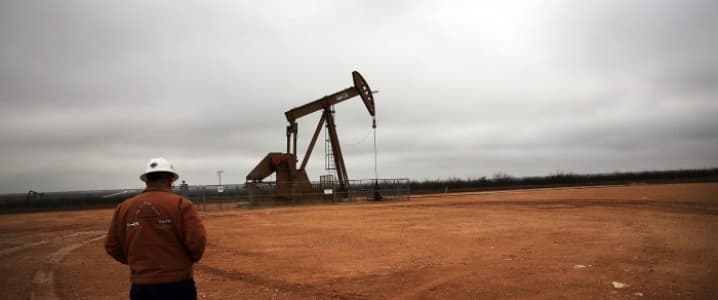While OPEC has just two weeks left until the May 25th meeting to decide on an extension of its production cuts, U.S. shale is back to drilling and planning capital spending increases this year at a pace that is ten times faster than the rise in international oil companies’ budgets.
Emerging from the oil price rout with leaner operations and a meaner cost attitude, U.S. shale has started taking advantage of the increase in oil prices following the production cut deal that OPEC and 11 non-OPEC nations led by Russia struck at end-November. U.S. production started growing from the recent lows, and drillers have become more confident in their plans, with WTI prices hovering around US$50 for most of the first quarter this year.
Drillers in North America plan a combined capital expenditure of US$84 billion this year, an increase of 32 percent compared to last year, according to Barclays analysts, quoted by Bloomberg.
By comparison, the budget programs for international projects are seen up just 3 percent in 2017, Barclays reckons. Related: Is This Country Africa’s Qatar Of Natural Gas?
The U.S. shale spending plans and growing production highlight the difficult position in which OPEC is caught – while the cartel is cutting production and trying to talk oil prices up, the shale drillers are reaping profits from the most profitable plays (hey, Permian) and reinvesting them in increased capital programs to pump more.
“The level of capital budget increases really surprised us,” Wood Mackenzie research analyst in Houston, Roy Martin, told Bloomberg in a phone interview.
“The specter of American supply is real,” he noted.
In its latest Short-Term Energy Outlook from earlier this week, the EIA lifted its U.S. crude oil production forecast to average 9.3 million bpd this year, compared to an estimated 8.9 million bpd last year. Next year, the EIA sees U.S. crude output averaging nearly 10.0 million bpd. Last month’s production averaged 9.1 million bpd, 200,000 bpd more than in April last year, and 600,000 bpd above the recent monthly average low reached in September 2016.
In the previous STEO, the EIA had expected this year’s production to average 9.2 million bpd and next year’s - 9.9 million bpd.
Unlike five supermajors in the space - ExxonMobil, Chevron, BP, Shell, and Total – U.S. shale drillers are working on shorter-cycle projects and didn’t have huge high-cost projects to review or defer amid the oil price crash. Among the five supermajors, it’s only Exxon that is planning higher capital spending this year, of US$22 billion, up by 16 percent from 2016. The other four are either keeping investment budgets flat, or as in Chevron’s case, are reducing the expenditure.
Within the ranks of U.S. independents, Pioneer Natural Resources’ 2017 drilling and completion capital of US$2.5 billion is US$600 million higher than in 2016. EOG Resources expects its capital expenditures this year to range from US$3.7 billion to US$4.1 billion. To compare, last year’s capital program of EOG Resources envisaged capex in the range from US$2.4 billion to US$2.6 billion. Related: Is This Country Africa’s Qatar Of Natural Gas?
Although the cost inflation coming from oilfield services companies could mean that breakeven costs will not continue to drop as fast as before, U.S. shale drillers have been hedging to lock in the price of future production and mitigate risks from oil prices falling too much.
“Recent disclosures reveal that producers rushed to lock in oil prices above US$50 a barrel after OPEC's November announcement about production cuts,” Andy McConn, research analyst at Wood Mackenzie, said in an analysis at the end of March, explaining why hedging will keep drilling levels buoyant during periods of low oil prices. Hedging activity has surged since Q4 2016, and “most of the new oil derivatives were added at strike prices between US$50 and US$60 a barrel,” WoodMac reckons, and warned that “Those hoping that recent oil-price weakness will prompt U.S. producers to pull back drilling activity and ease the glut of oil supply may need to keep waiting.”
So, while OPEC is trying to ‘fix’ the market, the price gains from its production-cut deal added more fuel and confidence to the activity and spending plans of U.S. shale.
By Tsvetana Paraskova for Oilprice.com
More Top Reads From Oilprice.com:
- Production Cuts vs Innovation – Why OPEC Has Lost The Oil Price War
- Solar Power To Threaten Conventional Power By 2020
- Bullish EIA Inventory Data Boosts Crude Prices

















